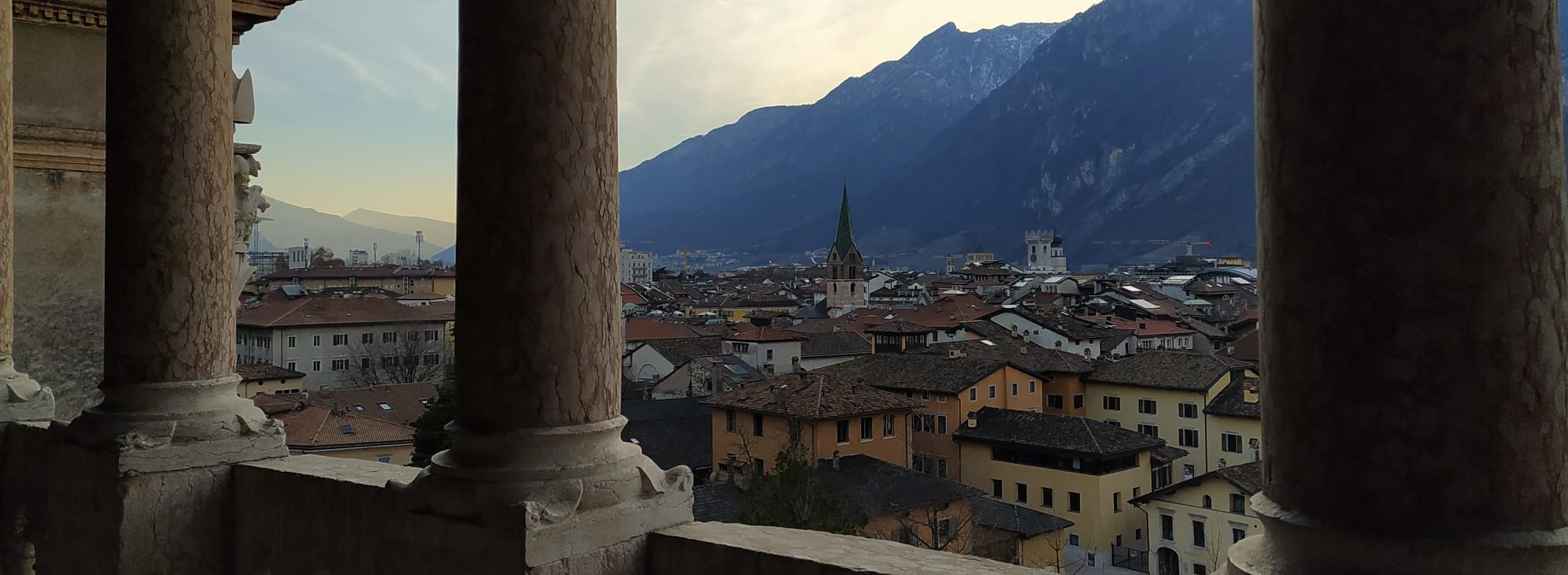A brief history of the blood libel of Trent, 1475
The death of Little Simon of Trent
During the Holy Week a two-and-a-half years old boy named Simon, son of the tanner Andreas went missing. After two days of researches without result, his corpse was eventually found in a ditch that flowed from the river Adige underneath the house of Samuel of Nuremberg, a moneylender and leader of the small Jewish community (some thirty people) of the small town. Since the disappearance of the boy, the vox populi started to blame the fact on the Jews, belief that only became more granitic after the dead body was retrieved from the waters.
The idea that the Jews were in some way or another used to kidnap and kill Christian children during Easter/Passover time was not entirely new at the time. Nowadays historians use to refer to this with the therm "blood libel", because part of the legend says that the Jews use the blood of the sacrificed children to perform various religious rituals. But, if this anti-Jewish slander was not a novelty in 1475, why is the case of Simon of Trent so special? What sets it apart from the other cases in which the Jews of some of the thousand of Jewish communities scattered around Europe where accused of the murder of a Christian child?
The truth is that many aspects of this episode are indeed quite unique. The main reason of this lies in the conspicuous amount of surviving documentation that is currently kept in the capsa 69 of the Archivio Principesco-Vescovile section of the Archivio di Stato of Trent.
Johannes Hinderbach and Battista de Giudici
By the time that news of the case of Trent started to spread, the Apostolic See had an already centuries-long tradition of hostility towards the blood libel against the Jews. Therefore, during the summer of 1475, pope Sixtus sent to Trent the bishop of Ventimiglia, Battista de Giudici, in the capacity of apostolic commissioner. De Giudici, a renowned theologian and legal expert, received from the pope the task of conducting an investigation around the way in which the trentini had conducted the trials against the Jews, because rumors had started circulating concerning some procedural flaws.
The fight between Johannes Hinderbach and Battista de Giudici is a central aspect to the future development of the case. The former, in fact, believed that the Jews were culpable of the crime, while the latter, upon his arrival in Trent (early September 1475), was rapidly convinced that the Jews were innocent and wrongfully convicted. The raging hostility of the inhabitants of the city, as well as the unwillingness to cooperate of the bishop and the podestà of Trent, Giovanni de Salis, quickly made de Giudici's mission impossible to be carried out. At first, around September 20, 1475, he moved from Trent to the nearby hamlet of Rovereto, some fifteen miles south of Trent. Although Rovereto was part of the diocese of Trent, it depended politically from the Republic of Venice, and therefore Hinderbach held there no secular power. Even this last attempt to complete his mission proved unfruitful; in late fall of 1475, de Giudici returned to Rome carrying nothing more than a sealed copy of the trials against the Jews and one Anzelinus, a dweller of Trent who he believed could serve as a witness to exonerate the Jews.
The controversy in Rome
In 1476 pope Sixtus IV decided to summon a commission of six cardinals which was tasked with examining the trial records of Trent and deciding whether Hinderbach or de Giudici was right. The cardinals met intermittently from 1476 to 1478, when they concluded that the trials of Trent had been conducted according to the proper forms and laws (rite et recte). This verdict is considered to be somehow a compromise solution: they did not accept fully and formally Hinderbach's claim, namely that Little Simon could be worshipped as a saint and a martyr, but, on the other hand, they didn't fully disqualify de Giudici's work either.
During the time the commission was active, Johannes Hinderbach had a pressing need of having some agents in Rome to foster his cause in the papal Curia; hence, the great amount of letters exchanged between the bishop and his associates during this period, that Monumenta Symoniniana aims to make easily available to the public.
